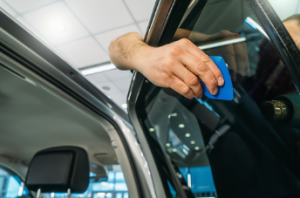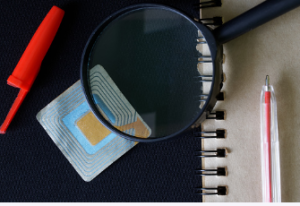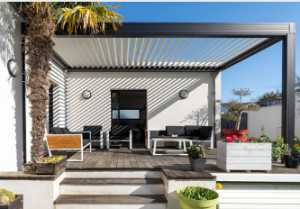Car window tinting is an excellent way to reduce glare, enhance the look of your car, and help protect the value of your vehicle. Tinted windows also offer several other benefits, including preventing the glass from shattering, reducing the risk of being ejected from the car, and even helping reduce the chances of an accident.
 Prevents shattering of glass
Prevents shattering of glass
If you want to improve your car’s safety, adding a layer of protection in the form of car window tinting is essential. These tints can help protect the occupants, the vehicle and other vehicles on the road from damage and prevent theft.
The best type of Xpert_Tinting car window tinting is those that resist shattering. It helps prevent injury and loss of life in an accident. Also, if the glass does shatter, the tint can help keep it intact.
One of the most effective ways to do this is to install a clear, shatterproof, and non-reflective window film. Some companies, such as American Standard Window Film, specialise in installing such products.
The company also produces a window film with an adhesive strong enough to hold broken glass in place. While some people are afraid of windows failing, it is a fact that many cars are stolen. In some cases, the window may get damaged, leading to theft.
In addition to helping with safety, Xpert_Tinting car window tinting can make your car look better. It is especially true if you choose a darker colour, which can make your vehicle less appealing to thieves. It can also save money on fuel.
For the savvy shopper, tinting your car’s glass can be a fun and easy project. Many tinting companies can even help with installation. They offer hard cards to help you apply the tint evenly, or they can even take care of the whole process.
As with anything, you were investing in a good quality product is wise. You don’t want to end up in an accident where you must replace your car’s windows. Car window tinting is one of the safest and most cost-effective ways to add a layer of protection to your vehicle. Get some of the best car window tints if you want extra safety.
Reduces glare
You’re not alone if you’ve ever had to deal with glare while driving. You can reduce glare in various ways when you’re behind the wheel. However, many drivers are worried that window tinting will affect their visibility. While this may be true in a few cases, achieving a more complete and practical view of the road is possible without losing sight of the road ahead.
The good news is that window tinting benefits you and your passengers. One of them is that it helps protect you from glass fragments and other breakage. It also increases your comfort.
You’ll find that a vehicle with window tint will make your ride more enjoyable. It will also improve your driving safety. For example, it will help prevent you from getting into an accident and decrease your eye fatigue. Plus, it will increase your confidence when you’re behind the wheel.
You can also choose to use window film to reduce glare. Window film is like an expensive pair of sunglasses for your windows. In addition to reducing glare, it will make your inside temperatures much more relaxed.
You can even apply window film to the side and rear windows. It is particularly helpful if you are driving in the rain. Aside from the comfort above and security benefits, window film can also provide increased UV protection.
Reduces risk of being ejected from the car
Specific safety measures can reduce the risk of being ejected from the car. One of these countermeasures is the use of seat belts. The higher the number of occupants wearing seat belts, the lower the risk of being ejected.
However, although most passengers and drivers in the United States wear seat belts, a small percentage of occupants are still ejected. It is particularly true in rollover crashes. In such collisions, the occupants can be crushed or thrown into the ground, objects nearby, or the vehicle.
According to the NHTSA, 35.3% of non-seatbelt occupants were ejected in motor vehicle collisions. Ejections are more common during high-speed crashes.
In addition to the increased risk of death and severe injuries, occupants ejected from the car also have an increased risk of suffering from critical injuries. It is because they are incapacitated and unable to respond to severe hazards.
Several factors contribute to occupant ejection accidents and must be analysed and acted upon to prevent them. These include the type of vehicle being used, the occupants’ seating position, and the impact of the occupant’s experience.
Several studies have found that occupants in sport utility vehicles have higher ejection rates than passenger cars. As a result, they have a higher centre of gravity, making them more susceptible to rollover crashes.
In addition to the increased risk, ejected occupants have a much greater chance of sustaining chest and abdominal injuries. Moreover, they are more likely to require a more extended hospital stay and an intensive care unit admission.
Studies have shown that the rate of ejections during motor vehicle crashes has decreased since 2002. While it is impossible to eliminate the risk of being ejected from a vehicle completely, several public policy and manufacturing measures are available to reduce the risk of such accidents.
For example, some newer vehicle models were designed to reduce the chances of being ejected. These more contemporary designs sometimes cut the odds of being removed in half.
 RFID (Radio Frequency Identification) is a technology that uses small electronic devices to capture and store information. It is also used to track and manage products. For instance, it can be used to prevent theft and shrinkage. There are many kinds of tags, each with its unique identity.
RFID (Radio Frequency Identification) is a technology that uses small electronic devices to capture and store information. It is also used to track and manage products. For instance, it can be used to prevent theft and shrinkage. There are many kinds of tags, each with its unique identity. Long-term care facilities require medication packaging
Long-term care facilities require medication packaging Some people choose to add a retractable pergola canopy to provide complete control over the amount of sunlight that enters their home. For example, if your patio area gets a lot of suns, a retractable pergola canopy can be added to keep it shaded. Alternatively, you can opt for a fabric sunshade to shield your family from harmful rays.
Some people choose to add a retractable pergola canopy to provide complete control over the amount of sunlight that enters their home. For example, if your patio area gets a lot of suns, a retractable pergola canopy can be added to keep it shaded. Alternatively, you can opt for a fabric sunshade to shield your family from harmful rays.